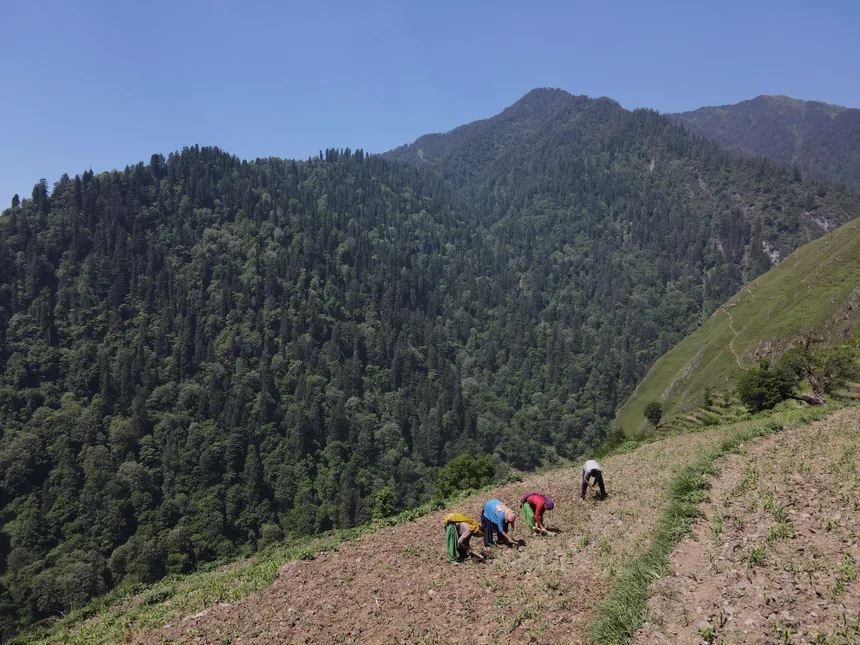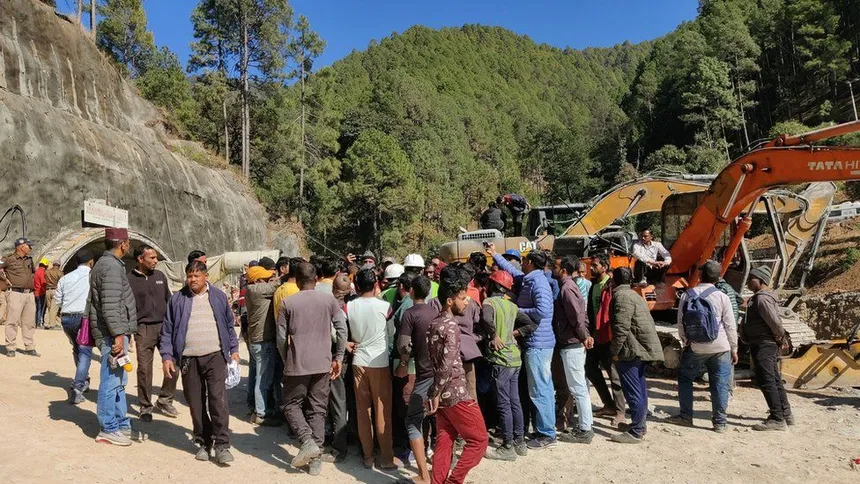Rescue efforts to reach 41 construction workers stuck in a collapsed tunnel in northern India have been stalled again due to the breakdown of the drilling machine used to dig out the debris. The machine, which had been used to make slow progress through the rubble of rock, stones, and metal, has been declared irreparable, according to Arnold Dix, an international expert assisting the rescue team. This setback will likely add significant time to the already two-week-long rescue operation.
The workers, who are migrant laborers from across the country, have been trapped since November 12 when a landslide caused a portion of the 2.8-mile tunnel to collapse about 650 feet from the entrance. The driller had broken down twice earlier in the operation, but this latest failure is more serious, as it means that the entire machine must be pulled out and replaced before digging can resume.
The rescue team has been working by hand to clear the debris, but the painstaking progress has been hampered by the challenging terrain and the breakdown of the drilling machine. The workers have been surviving on dry food and oxygen supplies sent through narrow pipes, and authorities have recently started providing them with hot meals made of rice and lentils.
The tunnel was being built as part of the Chardham all-weather road project, a flagship initiative of the federal government aimed at connecting various Hindu pilgrimage sites in Uttarakhand. However, some experts warn that the project may exacerbate fragile conditions in the upper Himalayas, where several towns are built on top of landslide debris.

Rescuers Face Longer Digging Route Struggle In India
The rescue effort is being hampered not only by the technical challenges but also by the isolation of the workers. Many of their families have travelled to the accident site, where they have camped out for days to get updates on the rescue effort and in hope of seeing their relatives soon. The ongoing rescue operation has also drawn attention to the risks and challenges faced by migrant laborers in India, many of whom work on construction sites in remote areas with limited access to medical care and other essential services.
Despite the setbacks, the rescue team is working on an alternative plan to reach the trapped workers using a new drilling machine that can dig vertically into the mountain. This plan involves creating an access road to the top of the hill and then digging 338 feet downwards to reach the workers. While this will slow down the rescue effort, it may ultimately prove to be the only way to reach the trapped workers and bring them to safety.
In the meantime, the families of the trapped workers remain anxious and worried, hoping for good news and a successful outcome to the rescue operation. As the situation continues to unfold, the world waits with bated breath for the outcome of this grueling and complex rescue effort.











































